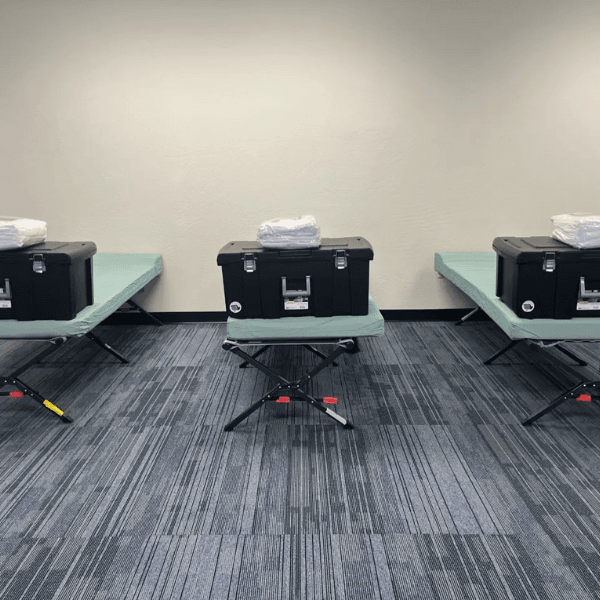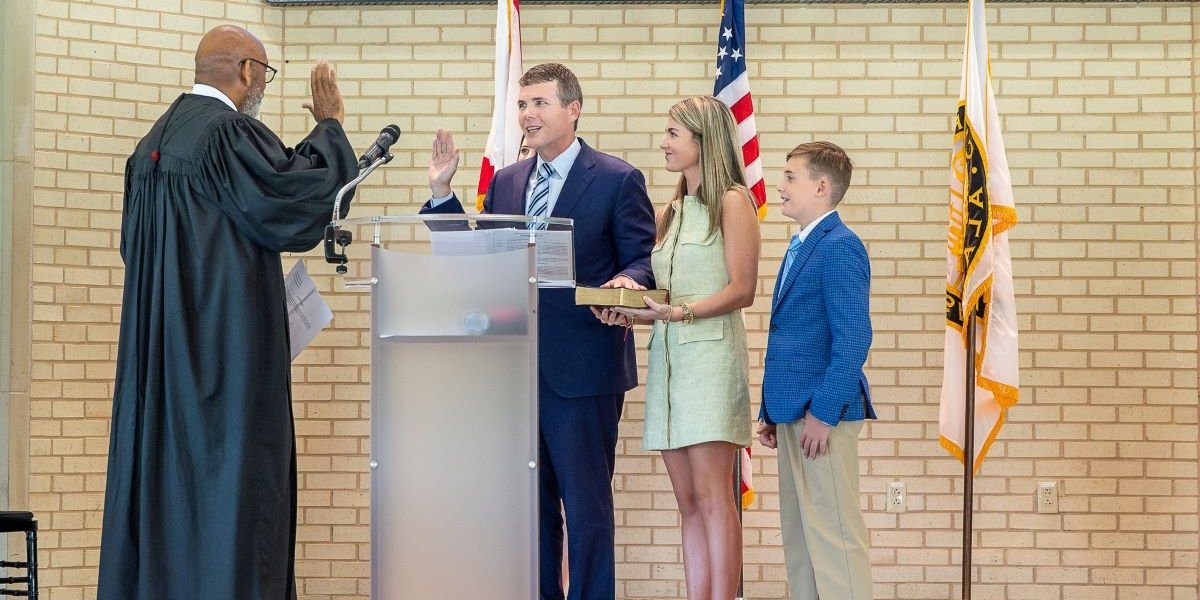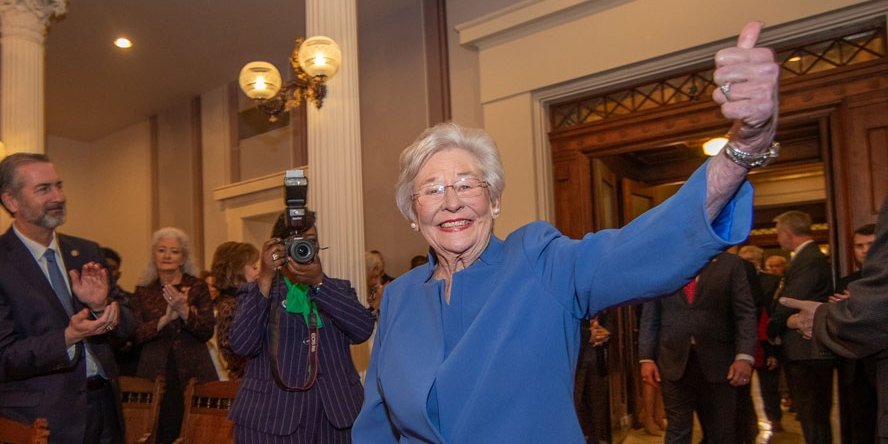Abstract
The Maricopa County Department of Human Services (MCHSD) worked with local governments across the region to reduce heat-related injuries and deaths in Maricopa County. MCHSD partnered with six cities and local nonprofits to develop individualized program models tailored to the needs of each community, from small to large, scattered sites providing basic services to large cooling centers with multiple staff and services. Nonprofit staff distributed 121,820 heat relief kits containing snacks and hats, sunscreen, and other hygiene items, as well as counseling homeless people about barriers to housing and connecting them to appropriate resources, such as shelters, housing, substance abuse treatment, domestic violence shelters, and peer support programs for individuals in crisis. From May to October 2023, MCHSD supported 17,254 hours of heat relief center services for 41,024 private visitors, who received 178,031 bottles of water. MCHSD staff shared lessons learned in each community with other providers to improve services in the summer of 2023 and identified areas for improvement in oversight, planning and delivery of heat stroke mitigation services in 2024 to continue reducing heat stroke and deaths in Maricopa County.
The problem or need that the program solves
Homelessness and extreme heat are on the rise both nationally and in Maricopa County, impacting cities throughout the valley. According to Maricopa County Public Health records, heat stroke deaths have increased from 61 in 2014 to 425 in 2022. While extreme heat presents challenges for all county residents, people experiencing homelessness are at higher risk for heat stroke because they have higher rates of chronic illnesses than the general population. Notably, the unsheltered population in our community has increased by 138% from 2017 to 2023, with several cities having limited emergency shelter programs and large daytime facilities to assist people experiencing homelessness. To address the needs of vulnerable unsheltered populations, MCHSD has partnered with six cities to expand the availability of heat relief services, including cooling centers.
Program Description
The heat relief IGAs signed with the cities of Chandler, Mesa, Glendale, Peoria, Phoenix, Scottsdale, and Tempe sought to expand existing services and support the development of new heat relief services in these communities. Program administration was subcontracted in part or in full to local, community-based nonprofit organizations with experience in outreach and social service delivery to target populations, but local procurement was done within each city's procedures and needs. In many cases, this included agencies that were leaders within the city, rather than nonprofit providers with whom MCHSD had not previously contracted.
The goal of the six IGAs was to provide heat protection services to at least 670 unduplicated individuals at seven cooling centers and multiple other scattered locations distributing water and other heat protection supplies between May and September 2023. Some cities, such as Glendale and Scottsdale, sought to provide transportation to increase access to cooling centers and incorporated street outreach providers, such as Community Bridges, Inc. and Phoenix Rescue Mission, to engage with people experiencing homelessness in their jurisdictions. Some sites incorporated access to co-located services not funded by the heat protection IGAs, such as showers, meals, and engagement services. The Heat Protection Network, led by the Maricopa Association of Governments, provided a community platform for guidance, community resources, program models, and a network of similar providers for ongoing technical assistance. HID staff will meet monthly with city staff to review expenditures, discuss ongoing concerns, identify areas for improvement for 2023 and 2024, and share effective strategies from other partner cities that may benefit their communities.
Additionally, MCHSD staff from the Homelessness Division worked with each city's program leaders to help plan, oversee, and evaluate each program as it expanded and responded to client demand for services. HID staff advised city staff on eligible expenses in accordance with federal and contractual requirements, budget planning, and the unique challenges of procurement and staffing for subrecipient nonprofits. As heatwaves increased in July 2023 and client demand for heatstroke relief services correspondingly increased, HID staff worked with each city to support program implementation and budget changes, supporting flexible spending plans or amending contract budgets to add funding for additional capacity or services. Where cities had challenges procuring transportation services, HID staff supported alternative strategies with rideshare, public transportation, and outreach partners.
In each city, HID staff developed clear and timely reporting processes to monitor on-site service delivery and recognize each provider's accomplishments. This also allowed HID staff to ensure that cities and subrecipient providers understood and met their contractual reporting obligations. Some providers had never previously reported monthly service delivery and required technical support to develop data collection capabilities. Prompt and clear communication was essential to the evaluation of the heat mitigation IGA as providers were aware of the rising temperatures, service delivery, and requests for information on their programs. The Maricopa County heatwave became a national story and an opportunity for MCHSD to demonstrate the planning and preparations it had taken before the July 2023 heatwave occurred. When necessary, HID staff ensured that emergency incidents and community complaints were addressed through appropriate channels and communicated to MCHSD leadership so they could respond and improve with municipal partners.
Throughout the implementation and eventual wind-down of the 2023 heat mitigation IGA, HID staff monitored ongoing performance and noted areas of improvement for 2024 based on feedback from municipal partners, subrecipient providers, Heat Mitigation Network leadership, Maricopa County Public Health staff, MCHSD, and other community members. HID staff participated in statewide conferences and workshops to share and hear from other agencies and community leaders about their insights and concerns for 2024. As 2023 concluded and data became available, HID staff evaluated 2023 heat deaths and flagged locations with high injury or fatality rates but limited heat mitigation services, such as cooling centers. HID staff outlined frequent concerns of subrecipient providers underspending or overspending within contract budgets and noted ways to revise budgets going forward based on procurement timelines and realistic project costs. These lessons learned and improvement strategies were shared with MCPH staff administering the heat mitigation IGA in 2024 for the January 2023 and January 2024 improvements, focusing on access, strategic planning around high-risk areas, and partnering with cities to explore more efficient procurement strategies.
Advancing diversity, equity and inclusion
Heat relief services funded by these partnerships provided life-saving relief to Maricopa County's most vulnerable and impoverished residents during some of Arizona's most extreme weather events. Additionally, many heat relief sites provided service referrals to individuals to programs that can help them end homelessness and increase their independence. Finally, it is important to recognize that individuals experiencing homelessness disproportionately include African Americans and Native Americans, the latter of whom are particularly unhoused.
Program Fee
The total operating costs for the FY2023 heat mitigation IGA (including both FY2022-23 and FY2023-24) were $1,755,088. This does not include MCHSD staff time spent drafting, implementing, and overseeing grants throughout FY2023. The program did not incur any capital costs. The wide variety of project models funded across the six IGAs in FY2023 would make it difficult to scale these operating costs to other regions. Additionally, while the project did not incur any capital costs, much of the program relied on existing infrastructure owned by the cities or nonprofits involved. Additionally, humidity, heat levels, use of and access to local air conditioning, and availability of local shelters all affect the type and need for heat mitigation services, so each community's local weather conditions must be considered when planning for the costs required.
Program Outcomes/Successes
As mentioned above, from May to October 2023, MCHSD supported 17,254 hours of heat relief center services for 41,024 visitors and distributed 178,031 bottles of water. While changing weather conditions make it difficult to quantify the specific impact of these services compared to previous years, having more heat relief services available, especially cooling centers, during the July 2023 heatwave is an accomplishment in itself and ensures the County and its partners were prepared when the emergency occurred.
















